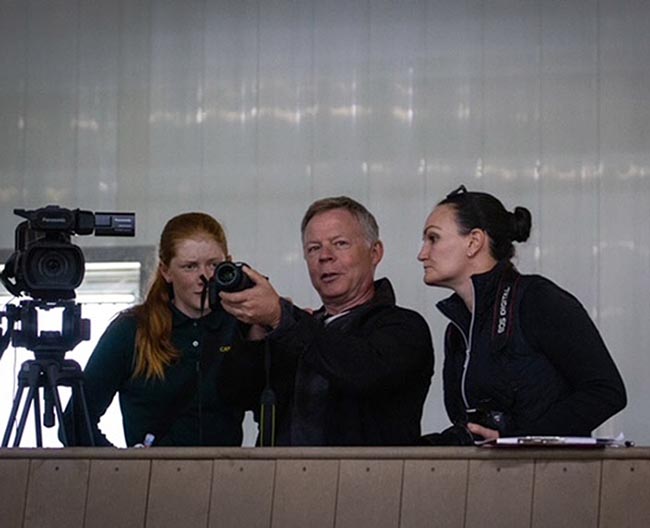By Chris Gould / CWHBA
Photography: CWHBA
A number of studbooks have instituted video inspections over the past two years as Covid restrictions played havoc with the ability to gather in groups and to travel inspectors – especially across borders. The Canadian Warmblood Horse Breeders Association is no exception.
In 2020 a few regional inspections did take place and the CWHBA offered a provisional breeding license to those stallions that presented at these events; adjudicated by a minimum of three accredited mare inspectors.
In 2021, with no prospect of bringing in international guest inspectors, the CWHBA switched to a video system. At the time of writing, the final adjudication has not yet been completed, however a number of observations may be made about the pros and cons of the system.
First the stallion licensing inspections were hosted across Canada, as before, on a regional basis (Ontario, Manitoba, Alberta, and British Columbia). At each site a senior stallion inspector was present to score in person and supervise the procedure to ensure that all guidelines were followed.
Professional videographers were hired and required to comply with standard protocols. Videos were not to be edited to remove any footage while the horses were being viewed. In the end, each stallion had a 25 to 30 minute video.
Once they were uploaded to the internet, the panel of judges reviewed the videos at their own convenience. Finally a Zoom meeting was convened with two guest judges from Europe, the supervising inspectors, and studbook committee members. Each stallion’s video was then shared on line and reviewed with the supervising inspectors awarding their scores, followed by discussion to arrive at a final mark.

So, how did it work out?
On the plus side there are several advantages:
Expert guest participation was possible, perhaps even to a level not previously possible at a live inspection.
By using freeze-frame or replaying segments, additional time could be spent before arriving at a consensus.
The inspection schedule could be tailored to the regional needs, eliminating the need for a travelling team with a tight schedule. A great advantage in a country as large as Canada, thereby improving the opportunity for stallions to be presented.
Every stallion was evaluated by the same panel. At the live inspections only two inspectors travel to every location for continuity.
On the other hand, there are cons that should be considered:
We had good video, but it’s also possible that a video session that did not follow the guidelines, or was of poor quality, could compromise a stallion’s chances.
There is a lengthy time delay for stallion owners waiting to hear the results.
Video is rarely flattering, so it’s still important to have the on-site inspector, and would be more ideal if the same person could visit each site to improve consistency.
Overall, and even though the final adjudication has not been completed, this first experience was certainly positive from the judges’ perspective, and may prove to be an accurate and fair way to proceed in the future. However, it remains to be seen whether the advantages will mean that video review becomes a regular part of future stallion gradings.
